Inventory Accuracy: What Every Business Owner Should Know
January 19, 2021 6 min read
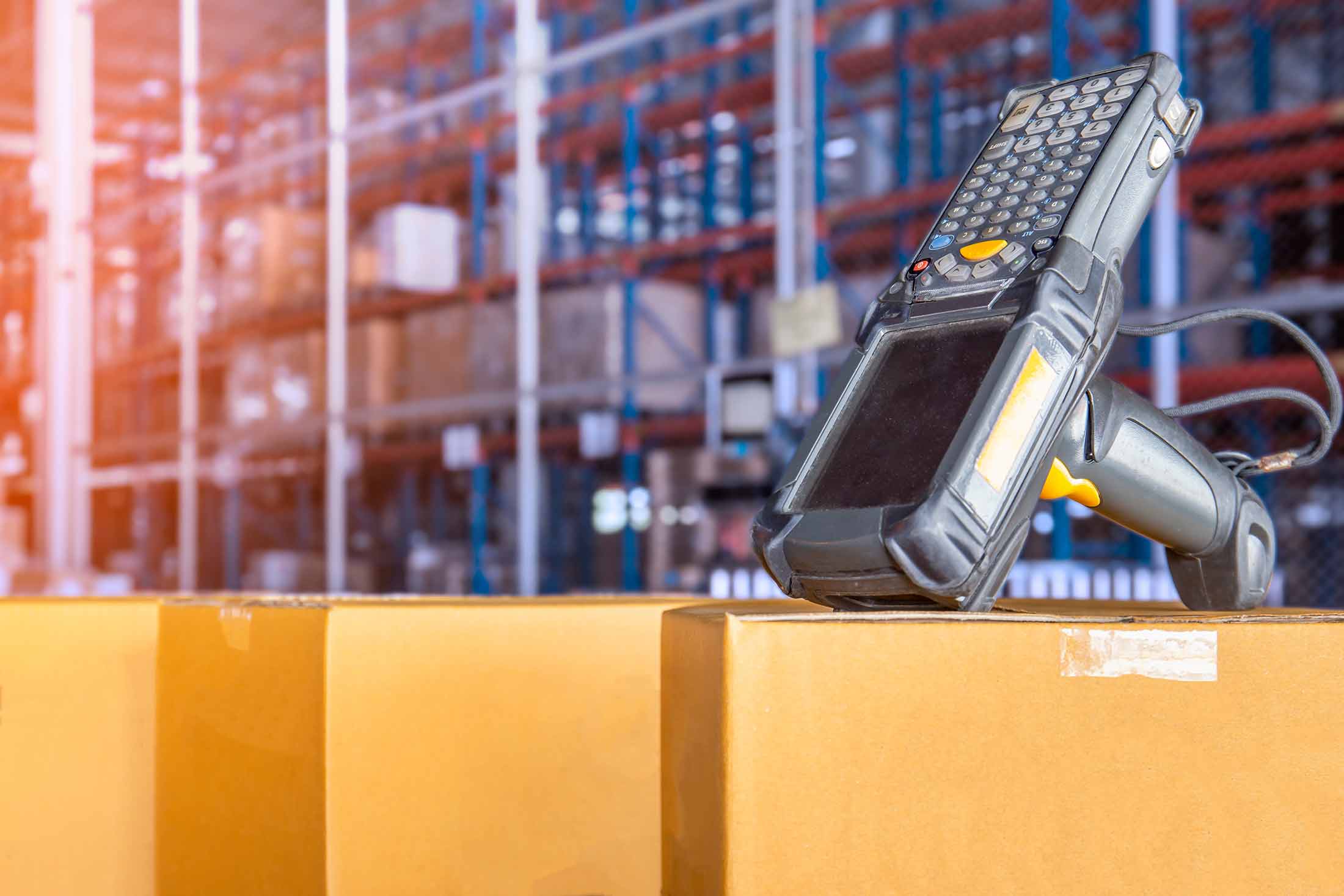
High levels of inventory accuracy are key to running a warehouse and business efficiently.
What’s the point of having stock in your warehouse if you don’t know that it’s there and can’t sell it?
It will just take up space and cost you money.
What happens when you sell a product you don’t actually have, and the customer has to wait for your resupply for weeks or months?
You risk losing those customers for good.
To avoid these issues, the digital records of your inventory need to line up with the real-life situation in your warehouses.
That’s where inventory accuracy comes in.
In this article, we’ll explain what inventory accuracy is in-depth, showcase examples of companies improving it, and how you can do it too.
To navigate to the section which interests you the most, click below:
- What Is Inventory Accuracy?
- The Inventory Accuracy Formula
- What Is a Good Inventory Accuracy Rate?
- Why Is Accurate Inventory Important?
- How a Distribution Company Used Modern Solutions to Get 99.99% Inventory Accuracy
- Accuracy From Warehouse to Doorstep Is Just as Important
What Is Inventory Accuracy?
Inventory accuracy is a metric that measures the difference between your records of warehouse stock and your real-life inventory. Inventory accuracy is critical for preventing stockouts, shortages, shrinkage, controlling inventory quality, and maintaining a positive customer experience.
Any inaccuracy can cause a heap of troubles throughout your supply chain. A registered product that doesn’t exist could get sold. Your records could show plenty of stock when you’re down to your last unit.
That’s why combating inaccurate inventory is so important.
Real inventory vs. electronic records
To have any concept of how accurate your records are, you need to count regularly and work to reconcile the data.
Compare the following:
- Electronic (or paper) records that your company uses to market and sell products online and in physical stores. The inventory data is often stored in an ERP solution or inventory management system. This data is often automatically updated through integrations with e-commerce solutions.
- Numbers from physical inventory counts.
You can run manual counts of physical inventory in two ways.
- Run a full-scale manual inventory count once every two weeks or every month.
- Use cycle counting: A cycle count is when you count a small subset of inventory on a specific day and cycle through it slowly with a focus on accuracy.
Without having the second dataset of manually confirmed inventory, you can’t measure the accuracy of your records.
You must gather this data before you can use the formula below.
The Inventory Accuracy Formula
To calculate inventory accuracy, you need to manually count the number of items currently in stock, divide that number by the stock count on record, and then multiply by 100. The number you get is your inventory accuracy rate.
But, before you calculate your inventory accuracy rate and use it as a KPI, you need to confirm that you have a reliable manual count to compare your inventory records to.
The count should meet the following criteria:
- The count is done and confirmed by multiple employees, reducing the chance for human error.
- The count is meticulously done over multiple days with a focus on accuracy.
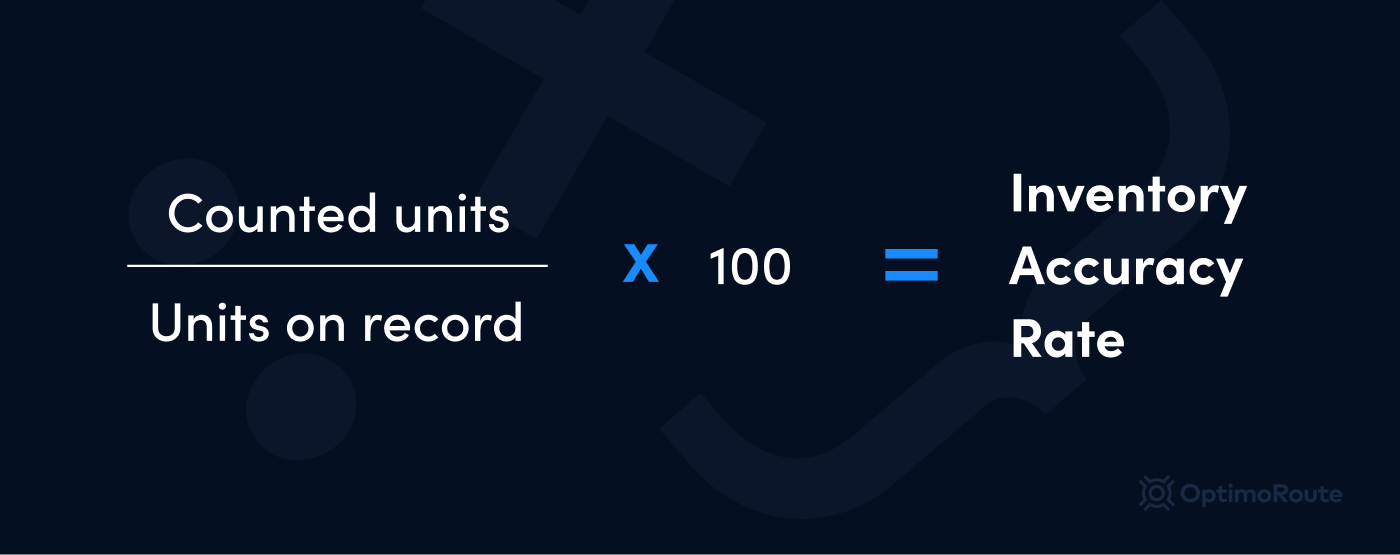
With the data on hand, the calculation is straightforward.
What Is a Good Inventory Accuracy Rate?
According to Auburn University’s RFID Lab, average inventory accuracy for companies ranges from 65% to 75%. That includes companies that use SKUs and barcode scanning to manage inventory.
Of course, such a low percentage (or lower) isn’t good for business.
The benchmark for most companies that want to improve their inventory management is 97% or higher.
Why Is Accurate Inventory Important?
To run an efficient business and optimize your inventory, your inventory records must reflect your actual inventory. If not, you may experience any of the following consequences:
Delayed product orders can cost you customers
According to Voxware, up to 69% of your customers won’t shop with you again if their delivery is delayed by more than two days.
If a customer orders a product that exists in the record but not in the warehouse, it could take weeks before they get the package.
If two days is enough to cost you their business, imagine how they’ll react to a much longer delay. Keeping your inventory counts accurate will help you avoid unexpected stock outs like this.
Unregistered inventory won’t get sold
You’ll probably also have inventory that doesn’t exist on record. You won’t be able to sell or plan to move this inventory.
That will considerably slow down sales of a product, and may also hamper inventory control efforts by leading to expired or spoiled goods. Inventory forecasting is another critical process that can be disrupted by inventory inaccuracies, which can lead to further order fulfillment and replenishment issues.
Can lead to overstocking and extra holding costs
Bad records can often lead to poor decisions, like buying too many inventory items based on flawed usage numbers.
That will lead to excess inventory, extra carrying costs and fill up your warehouses with unsellable stock.
An effective inventory process needs to maintain accurate digital records. If not, it’s impossible to manage your stock levels efficiently.
Let’s examine how one company solved this problem.
How a Distribution Company Used Modern Solutions to Get 99.99% Inventory Accuracy

West Coast Distribution struggled to maximize inventory accuracy with its old mishmash of systems.
Handling wares for large enterprises like Macy’s and Nordstrom, WCD has a small margin for error unless it wants to lose clients.
So it needed to improve, and fast. It turned to a modern inventory management solution.
New WMS with real-time tracking
The Scale WMS (Warehouse Management System) tracks incoming and outgoing items in real time through barcoding and RFID.
Every shipped or received item in the warehouse is quickly scanned and automatically added or removed from the system.
Automations reduce human errors
Instead of manually entering information with new shipments, everything is added to the records automatically.
These automations led to fewer human errors and an astounding 99.99% inventory accuracy even without a manual cycle counting program.
Tracking improved the efficiency of picking, packing, and shipping
The real-time tracking with locations through RFIDs improved the efficiency of picking, packing, and shipping.
Pickers no longer need intimate knowledge of where every product is stored to work efficiently. It makes it a lot easier for new employees to work effectively.
But inventory accuracy doesn’t matter if you drop the ball on last mile delivery.
Accuracy From Warehouse to Doorstep Is Just as Important
Improved inventory accuracy can be a great asset to your business. But it’s not the only part of logistics where precision is key.
It doesn’t matter if the stock is accurate and you send the right order if a driver then delivers it to the wrong address. That’s still an expensive mistake that could cost you loyal customers.
That’s why you should focus on shipping accuracy as well.
With OptimoRoute, you can eliminate human errors with a delivery driver app, track packages in real time, and use analytics to solve any ongoing issues.
Eliminate human errors with our driver app
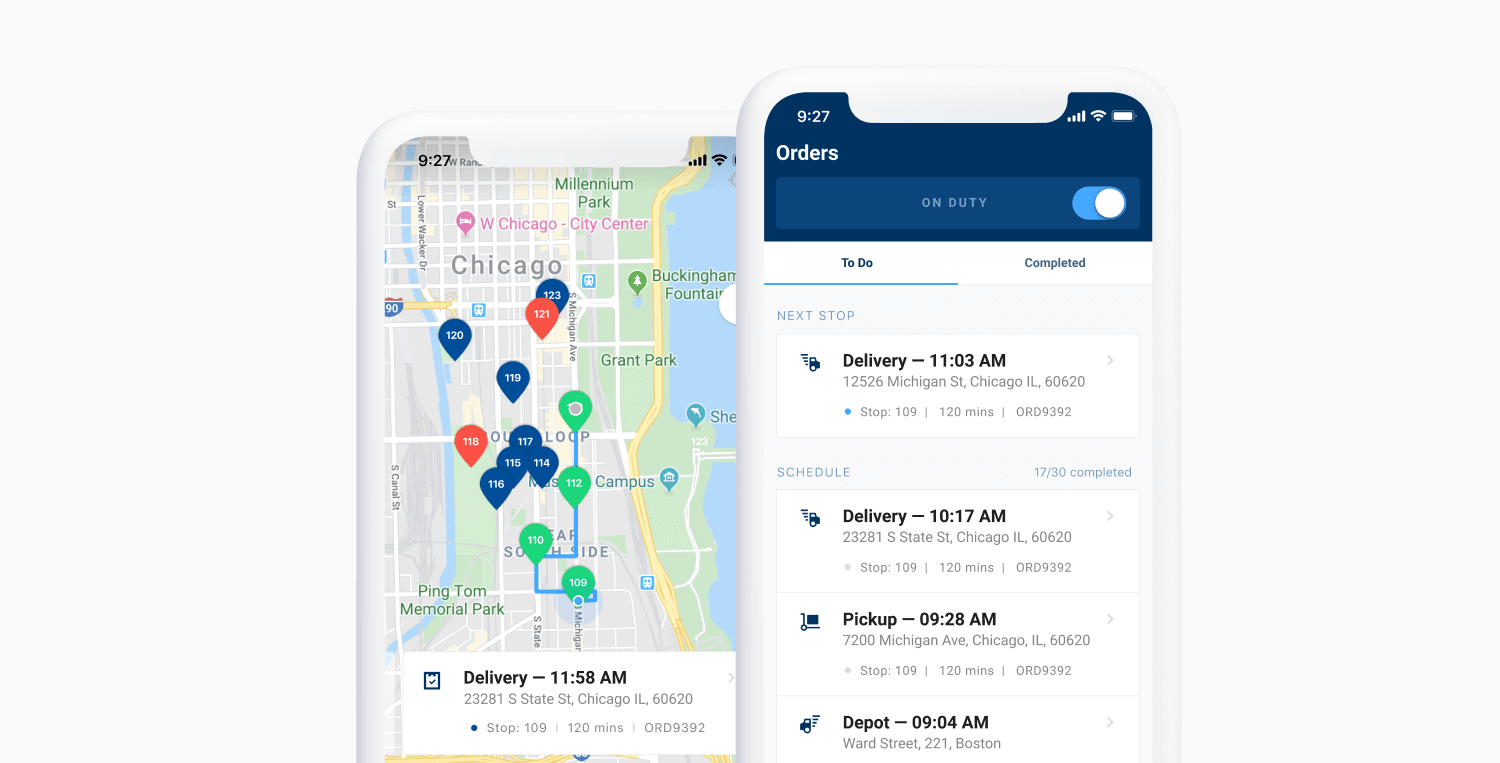
With OptimoRoute, managers can automatically send routes directly to drivers through the driver app. The drivers can then open up the order list and find directions with the click of a button. There’s no risk of them mistyping or misreading an address.
Track packages in real time
If your drivers use the app, you can also track their movements and deliveries in real time. Every time they arrive at an address, the app will automatically ask them if they successfully delivered the package.
The app then sends this data, along with the real-time GPS location, to the dashboard.
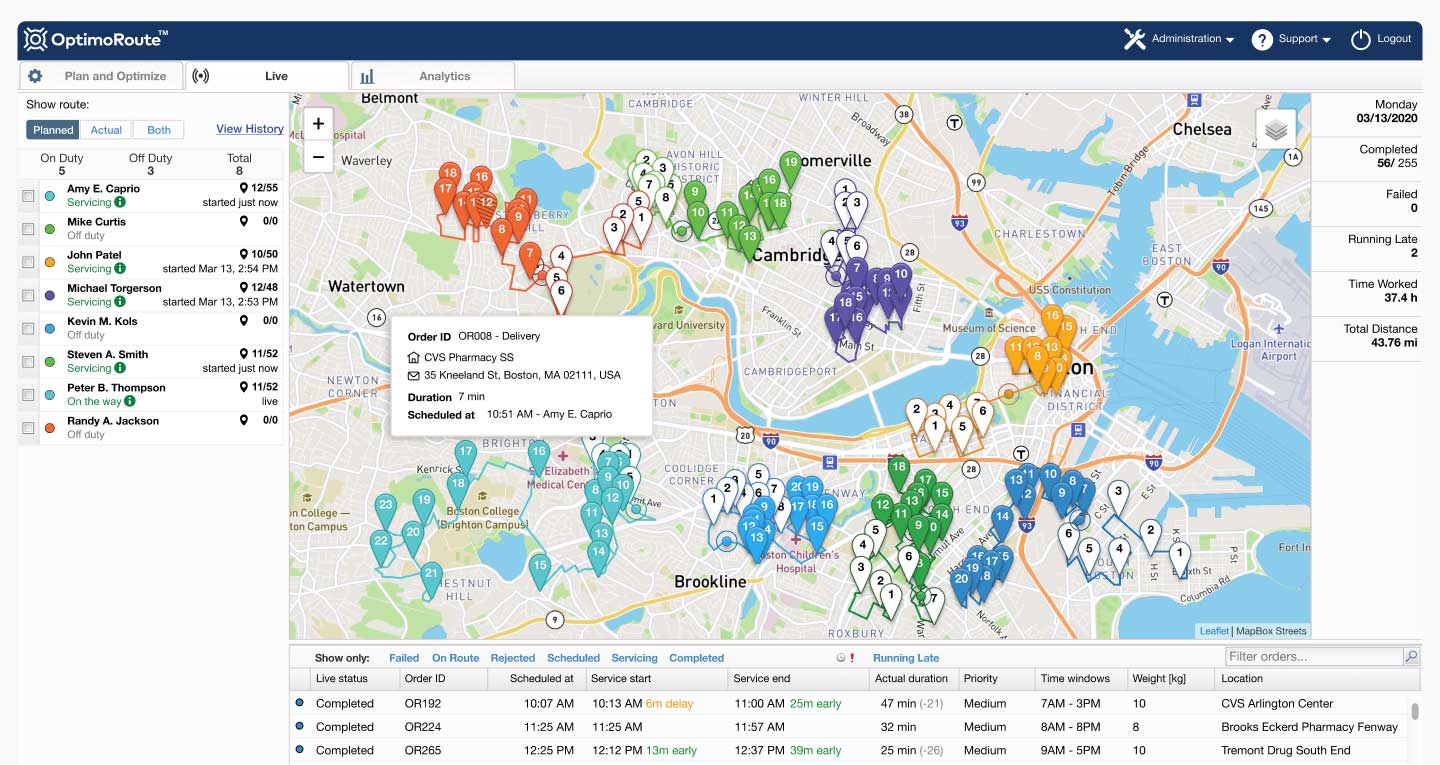
Filled in pins are completed deliveries, while outlined ones have yet to be delivered.
You can also see the status of all deliveries, including ETAs and predicted delays in the table below it.
Use analytics to solve problems
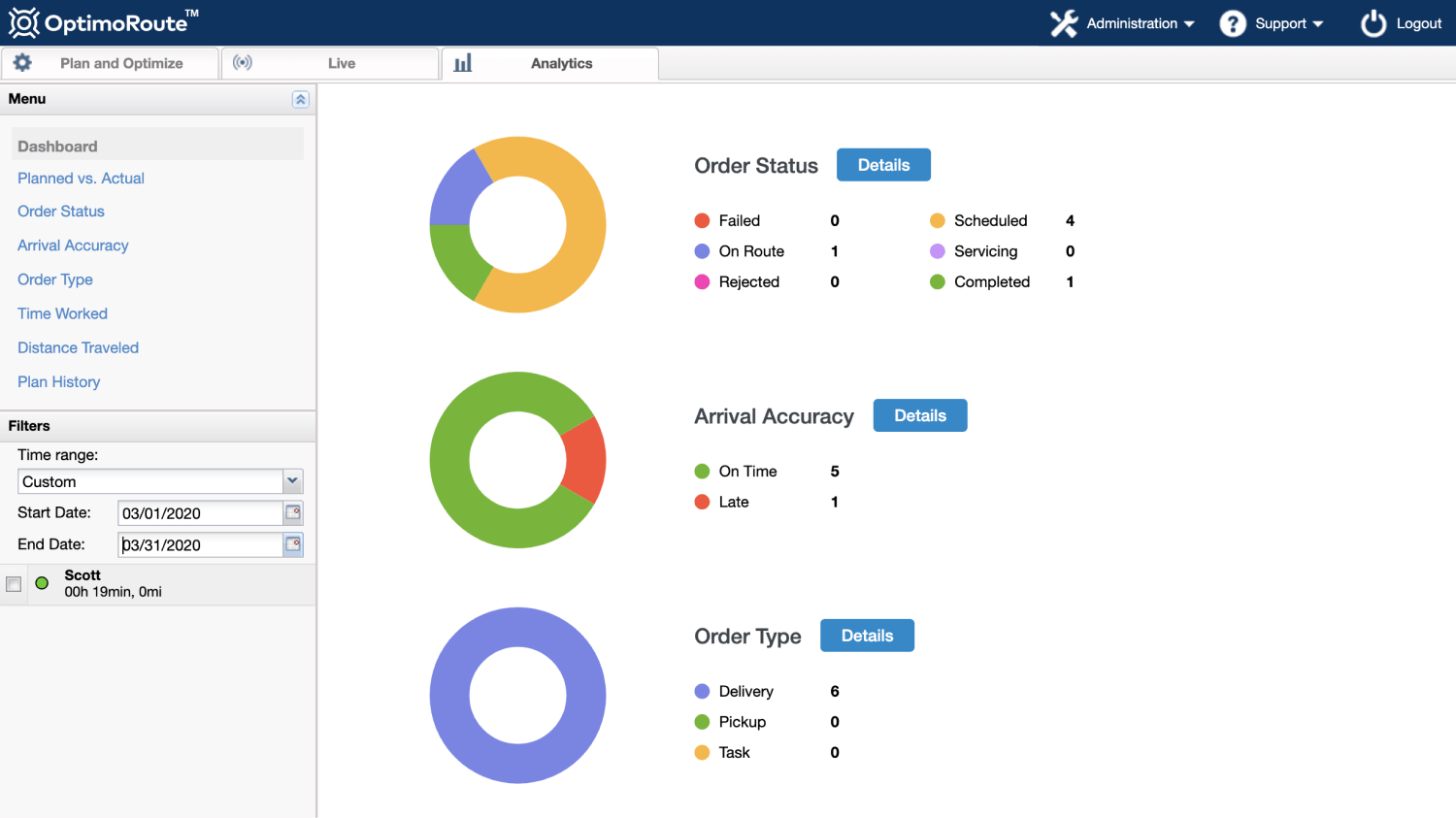
You can use detailed analytics to solve problems like failed or delayed deliveries. Is a specific weekday a problem? Are some drivers not waiting enough for customers?
Explore the data and find the root cause of your problems.
Plan better routes to improve efficiency and ensure packages are on-time
What makes OptimoRoute perfect for solving this problem is that it’s not a driver or package tracking system.
Our route optimization software helps you plan better routes and schedules for your drivers and vehicles.
Instead of spending hours or even days with spreadsheets and Google maps, you can plan up to five weeks of deliveries in mere minutes.
All you need to do is import your order list, and OptimoRoute will handle the rest.
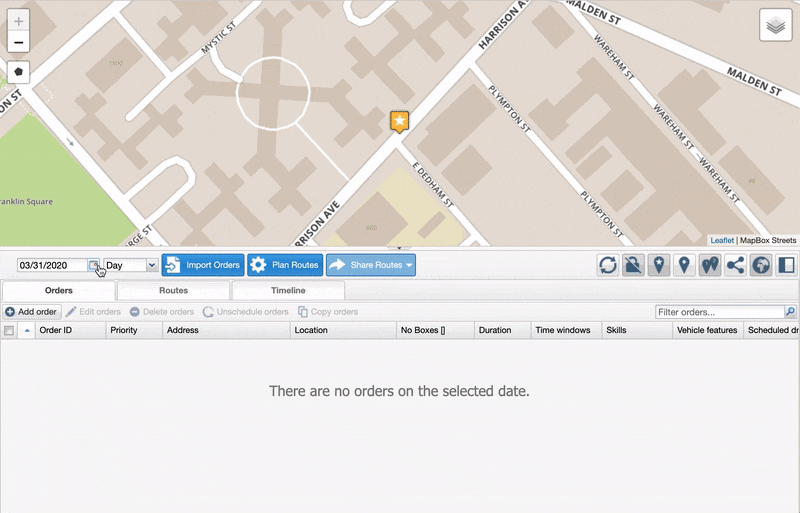
OptimoRoute even accounts for real-world constraints like delivery times, vehicle capacity, vehicle capabilities (refrigeration, etc.), driver schedules, and more.
You can also assign different drivers to different depots and service areas and plan for multiple locations at once.
Conclusion
You can use cycle counts or upgrade your WMS to improve the accuracy of your inventory. Accurate electronic records will help you avoid overstocking and promptly sell all your products.
You’ll also avoid having to cancel or delay orders due to phantom inventory.
But that’s only the first step of accurately delivering your customer’s order. With OptimoRoute you can track packages on the road, eliminate human errors, and speed up deliveries with better routing.
Start your 30-day free trial today to see how OptimoRoute can improve the accuracy of your deliveries.
Try OptimoRoute™ for Free
No installation or credit card required


